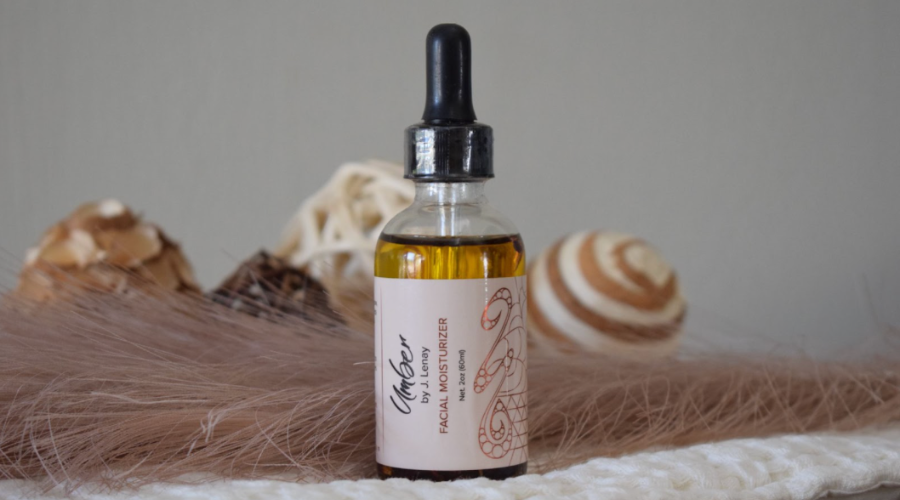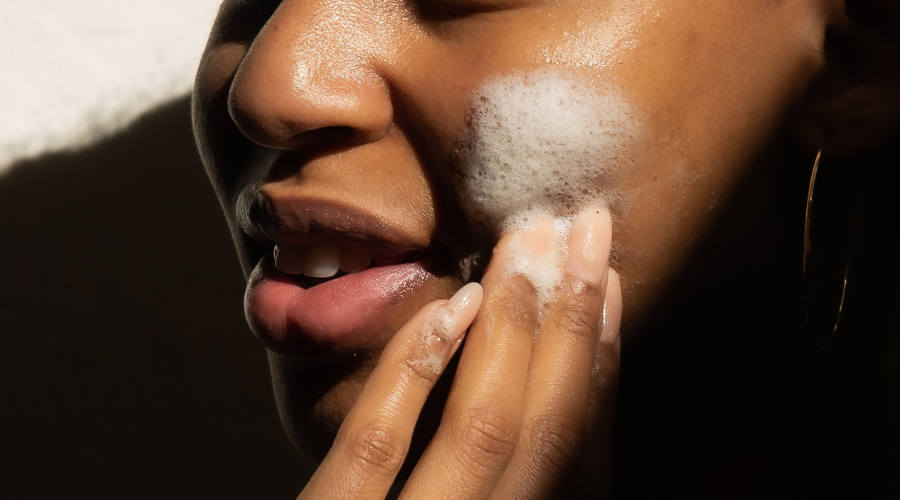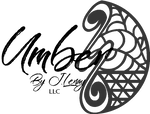How to Remove an Ingrown Hair on Your Face at Home

Have you ever noticed those pesky bumps that seem to randomly pop up on your face? Yeah, we're talking about ingrown hairs - they can be painful and just plain annoying. But before you go attacking your face with tweezers, listen up.
Trying to dig out an ingrown hair usually just makes it worse and can cause scarring or infection. The good news is there are some simple, safe ways to get rid of ingrown hairs at home. In this quick guide, you'll learn what causes ingrown hairs in the first place and how to remove an ingrown hair without doing damage. We'll cover how to treat existing ingrown hairs and prevent new ones from forming. With a few basic tools and these easy steps, you can kiss those bumps goodbye and get smooth, irritation-free skin. Ready to finally tackle those ingrown hairs? Let's do this!
What Is a Facial Ingrown Hair and What Causes It?
An ingrown hair on your face occurs when a hair curls back into the skin, causing inflammation and irritation. It forms a painful bump that looks like a pimple. Ingrown hairs are caused by dead skin cells blocking the hair follicle, forcing the hair to grow sideways under the skin.
Shaving and Dead Skin
Shaving, especially too closely, removes the top layer of dead skin cells and can lead to ingrown hairs by causing the hair to curl into the skin. As dead skin accumulates, it traps the hair underneath. The buildup of dead skin, combined with naturally curly hair, creates the perfect environment for ingrown hairs.
Clogged Hair Follicles
Oily or clogged hair follicles prevent the hair from breaking through the skin properly. The hair gets trapped below the surface, causing swelling and redness. Using harsh skincare products that strip the natural oils can have the opposite effect and stimulate excess oil production, clogging hair follicles.
Improper Exfoliation
Not exfoliating regularly allows dead skin cells to build up and block hair follicles. But over-exfoliating can also lead to ingrown hairs by causing inflammation and irritation. Finding the right balance of gentle exfoliation 2-3 times a week is key to keeping hair follicles clear and preventing ingrown hairs.
With regular exfoliation to remove dead skin, proper shaving techniques, and keeping hair follicles clean and clear, you can kiss facial ingrown hairs goodbye and maintain smooth, bump-free skin.
How to Avoid Getting Ingrown Hairs on Your Face
Exfoliate Regularly
Exfoliating removes dead skin cells from the surface of your skin and unclogs hair follicles. Do this 1-2 times a week, especially after shaving or waxing, to prevent ingrown hairs. Use a facial scrub, chemical exfoliant like glycolic acid, or facial brush to gently buff away dead skin.
Shave Properly
Shaving too closely or aggressively can lead to ingrown hairs. Use a clean, sharp razor and shave in the direction of hair growth using light, short strokes. Rinse your razor frequently under warm water to prevent clogs. Shave after showering when your hair is soft and skin is hydrated. Apply a moisturizing shave gel or cream and consider using a single-blade razor which is less irritating.

Moisturize Daily
Keeping your skin hydrated creates an environment where hairs can grow unimpeded. Apply a facial moisturizer daily, especially after shaving or exfoliating. Look for a non-comedogenic moisturizer that won't clog pores. Moisturizing helps soften skin and hair follicles, allowing hairs to break through more easily.
Let Your Hair Grow In
If you frequently deal with ingrown hairs from shaving or waxing, let your hair grow in for a few weeks. This allows any existing ingrown hairs to surface and new hairs to grow in unencumbered. Resume hair removal once the area has fully grown in. You may find hairs are less likely to become ingrown when you do start shaving or waxing again.
Hair Reduction Fade Oil
Incorporating hair reduction fade oils into your skincare regime can be an effective strategy for managing ingrown facial hairs. This specially crafted oil blend various ingredients designed to serve a dual purpose: they aim to both diminish hair growth and provide relief to the skin.
Such oils typically feature natural elements that work progressively to thin out and decrease facial hair. With components like essential oils, hair reduction fade oil may lessen hair density or decelerate hair regrowth following removal. The advantage here is clear: finer and less dense hair has a reduced tendency to loop back into the skin, thereby lowering the risk of ingrowns.
Additionally, these oils offer a calming effect on the skin, which is crucial for soothing the irritation and redness that often accompany ingrown hairs. Their anti-inflammatory ingredients can alleviate the skin, reducing the urge to tamper with the affected area, which could otherwise exacerbate the problem or cause infection.
With consistent use, hair reduction fade oil can lead to subtler hair growth, smoother skin, and fewer ingrown hairs, due to the less robust nature of the hair that regrows.
Step-by-Step Guide to Removing Facial Ingrown Hairs at Home
To safely and effectively remove ingrown hairs on your face, follow these steps:
Disinfect the area
First, wash your hands and the area around the ingrown hair with soap and water. Then apply a small amount of disinfectant like isopropyl alcohol to the area to kill any bacteria. Gently pat dry with a clean cloth.
Loosen the hair
Use a warm compress on the ingrown hair for 10-15 minutes, a few times a day to soften the skin and open the pore. You can also apply a mild exfoliantto loosen the skin around the hair.
Extract the hair
Once the hair is loose enough, use sterilized tweezers to grip the hair and extract it in the direction it’s growing. Pull up and out slowly and steadily. Applying a warm compress before extraction can help open up pores and loosen the hair, making the process easier and less painful.
Treat and protect
After extracting the ingrown hair, apply a dab of antibiotic ointment to the area to prevent infection and promote healing. A hydrocortisone cream can help with any inflammation. Continue to exfoliate the area regularly to prevent the ingrown hair from coming back.
With some patience and care, you can safely remove ingrown facial hairs at home. However, if the ingrown hair is severely inflamed, painful, or does not improve in a week, see your dermatologist for medical treatment to avoid scarring or infection.

Aftercare Tips for Treating Ingrown Hairs on Your Face
Once you’ve removed the ingrown hair, it’s important to properly care for the area to avoid infection and speed healing. Here are some aftercare tips to keep in mind:
Clean the Area
Gently wash the area with mild soap and water to remove any dirt or bacteria. Pat dry with a clean cloth. Apply a small dab of antibiotic ointment to help prevent infection and promote healing.
Reduce Swelling
If the area is swollen, apply a cold compress such as a washcloth filled with ice or a chilled spoon to help reduce inflammation. Do this for 10 to 15 minutes, a few times a day. An over-the-counter hydrocortisone cream can also help with any redness or itching.
Moisturize and Exfoliate
Once any swelling has gone down, moisturize the area daily with a fragrance-free moisturizer to keep the skin soft and promote new cell growth. Gently exfoliate the area 2-3 times a week to remove dead skin cells. This will prevent new ingrown hairs from forming. Use a soft washcloth, facial scrub, or chemical exfoliant like glycolic acid.
Let the Hair Grow Out
Resist the urge to tweeze or wax the area again right away. Let the hair grow out for at least a week so the follicle has time to heal and the ingrown hair is less likely to recur. Tweezing or waxing too soon could lead to another ingrown hair in the same spot.
By properly cleaning, treating inflammation, keeping the area moisturized, and allowing hair to grow out, you can minimize scarring and prevent ingrown hairs from coming back. Be patient through the process and your skin will be clear and hair-free again in no time. Consistent care and exfoliation will help you avoid chronic ingrown hair issues on your face.
When should I see a dermatologist for an ingrown hair?
See your dermatologist if:
- The ingrown hair is severely inflamed, swollen or painful.
- You notice signs of infection like pus, crusting, or blisters.
- The ingrown hair does not clear up in 7-10 days with home treatment.
- You frequently get ingrown hairs and want to discuss medical procedures to prevent recurrence.
.With proper technique and aftercare, you can usually extract an ingrown facial hair safely at home and reduce the chances of them returning in the future.





